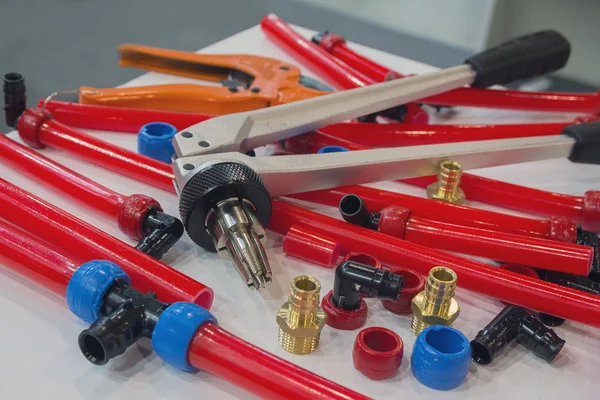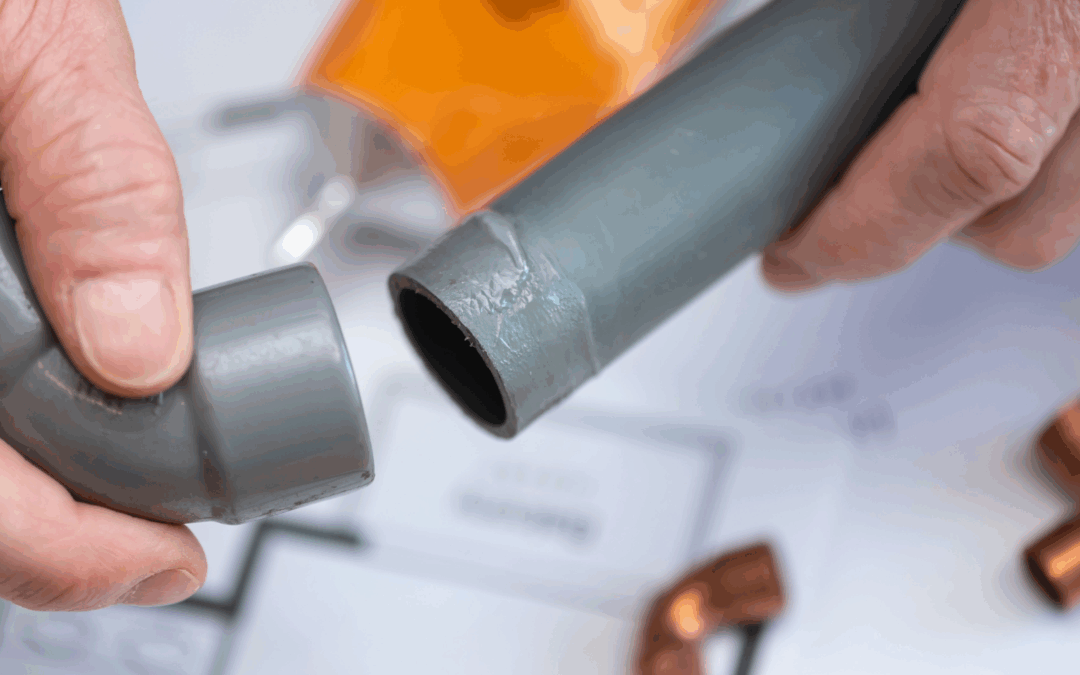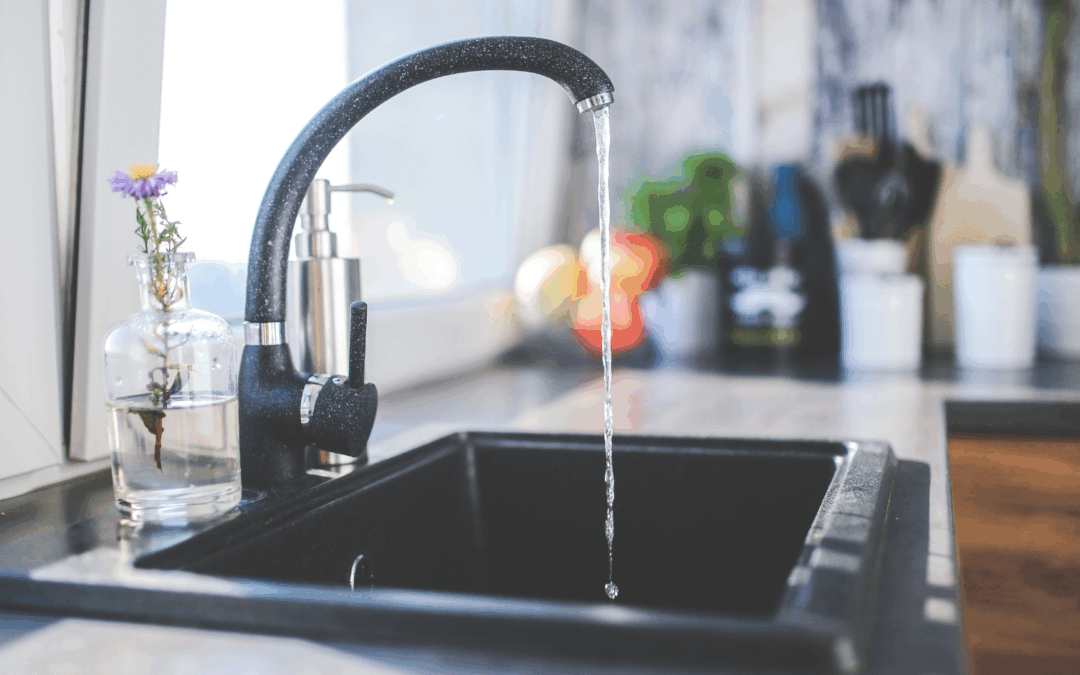What is PEX pipe?
Plumbing can be a confusing maze of choices—copper, galvanized steel, CPVC, PEX… If you’re embarking on a home renovation or just exploring options for your plumbing system, you may have heard of PEX pipe. But what exactly is it, and why is it becoming an increasingly popular choice for homeowners?
This guide will walk you through everything you need to know about PEX piping—from what it is and its history, to its benefits, installation, and common uses. By the end, you’ll see why PEX pipe is a game-changer in today’s plumbing systems.
Schedule Service Online
Get a free estimate so you know what you're signing up for
"*" indicates required fields
For Emergency Services Call: 410-255-9300
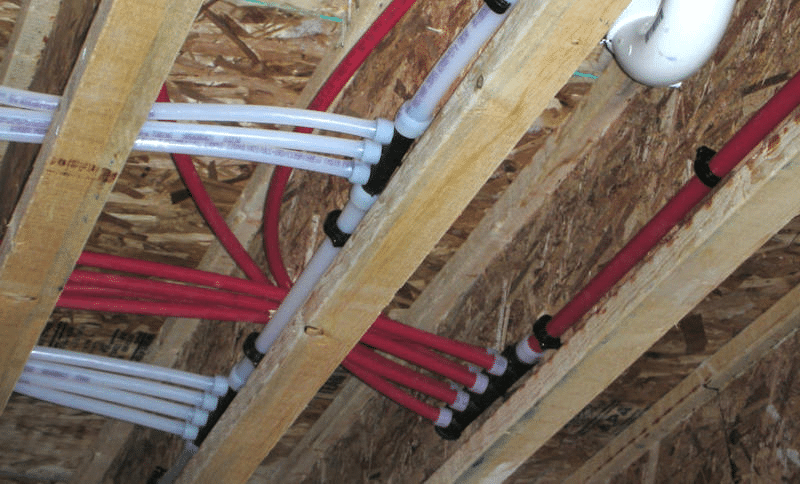
What Is PEX Pipe?
PEX piping, short for cross-linked polyethylene, is a flexible plastic pipe commonly used in residential and commercial plumbing systems. This flexible PEX piping is known for its unique composition, formed through a chemical process that links polymer chains, ensuring strength and flexibility while resisting corrosion and scaling.
Unlike traditional metal piping, PEX is available in different colors—red for hot water, blue for cold water, and white or gray for general use—making installation more intuitive. PEX piping is also certified safe for carrying drinking water, and its popularity has soared. Today, it’s used in over 60% of new residential plumbing systems.
A Brief History of PEX
PEX piping originated in 1968, when German scientist Thomas Engle developed the material to improve plumbing systems. Initially, it was primarily used in radiant floor heating systems in the 1980s.
However, when PEX tubing was introduced to the U.S. around the same time, poor reactions to the chlorine in public water systems posed early challenges. It wasn’t until manufacturing techniques improved—and PEX could better withstand chlorine levels—that it became a household favorite for drinking water systems.
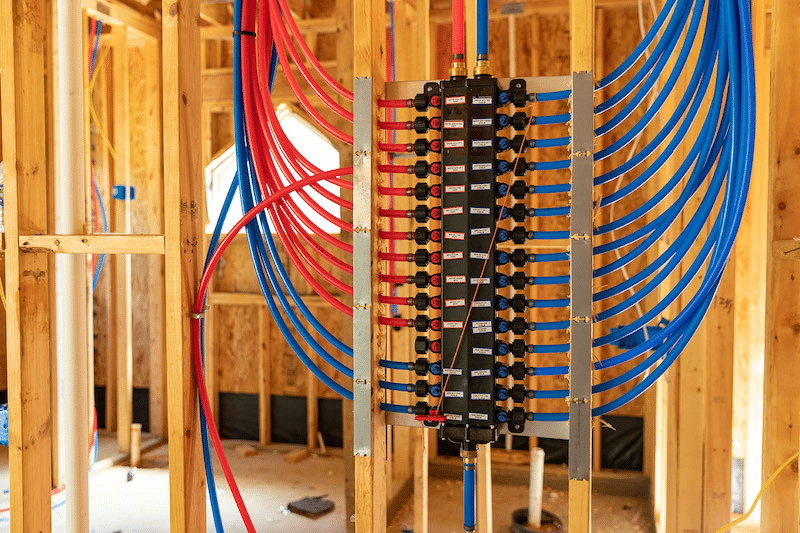
Types of PEX Pipes
PEX pipes come in three main varieties, each suited for specific projects.
1. PEX-A
PEX-A is the most flexible type, manufactured through the Peroxide (Engel) method. It’s ideal for projects requiring bending around sharp corners or installations in tight spaces.
2. PEX-B
Produced using the Silane (moisture cure) method, PEX-B is the most common type of PEX piping. It offers a good balance of affordability and durability, making it a go-to for many standard plumbing systems.
3. PEX-C
PEX-C is created using an electron irradiation process. While slightly less flexible than PEX-A, it’s still a good choice for applications like supply lines and closed-loop heating systems.
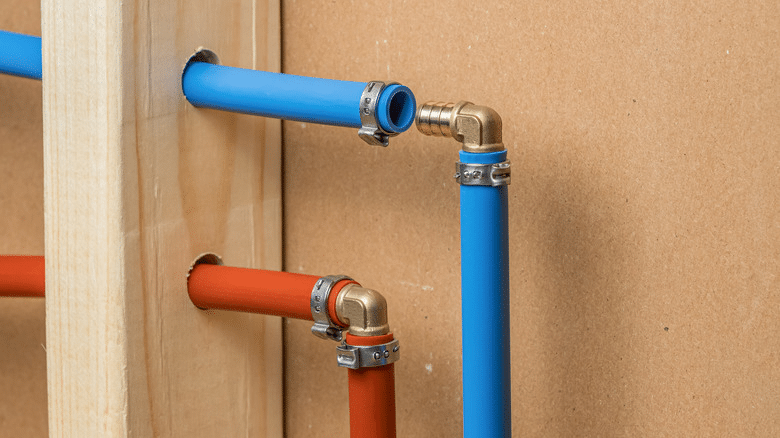
Why Choose PEX? Benefits Galore!
Homeowners are shifting toward PEX pipe for a variety of reasons. Here’s why it stands out.
1. Flexibility
Unlike rigid materials like copper piping or galvanized steel pipes, flexible PEX piping is flexible, enabling easier installation. You can “snake” it around corners without needing multiple elbow fittings, saving time and effort.
2. Fewer Connections = Fewer Leaks
PEX pipes can be installed using “home-run” plumbing, directly routing pipes from a manifold to fixtures. This eliminates the risk of leaks at multiple connection points.
3. Resistance to Corrosion and Scaling
PEX is resistant to corrosion, scaling, and mineral buildup—a common issue with copper and galvanized steel pipes. That means fewer clogs and longer-lasting performance.
4. Cost-Effective
Compared to metal piping, PEX is more affordable—not just in terms of material cost, but also labor. Its flexibility and lightweight design make installation quicker and cheaper.
5. Freeze Resistance
PEX tubing is less prone to bursting in freezing conditions compared to rigid pipes. If water freezes inside, the material expands, offering higher resistance to cracking.
Drawbacks of PEX Pipe
While PEX pipe offers numerous benefits, it’s important to be aware of its potential drawbacks. One of the primary concerns is the risk of kinking. If PEX tubing is bent or twisted too tightly, it can kink, leading to reduced water pressure and flow rates. This can be particularly problematic in areas where the pipe needs to navigate tight spaces.
Another issue to consider is the susceptibility of PEX pipes to damage from rodents and other pests. These creatures can chew through the flexible PEX tubing, causing leaks and requiring repairs. Additionally, PEX is not suitable for outdoor use. Exposure to UV light can degrade the material, and extreme temperatures can cause it to become brittle and crack.
Cost is another factor to consider. While PEX piping can be more expensive than traditional copper or galvanized steel pipes, its flexibility and ease of installation often offset the initial cost difference. However, it’s essential to weigh these factors when deciding on the best piping material for your home.
Comparing PEX to Other Piping Materials
Still unsure how PEX holds up against alternatives like copper or CPVC (chlorinated polyvinyl chloride)? Here’s a quick comparison.
- Copper Pipes provide durability but are expensive and prone to corrosion over time. They also tend to burst in freezing temperatures.
- Galvanized Steel Pipes are extremely durable but heavy, expensive, and prone to rust and corrosion.
- CPVC Pipes are inexpensive and easy to install but require glue-based connections, which can weaken over time.
Compression fittings are often used with PEX, allowing for easier disassembly and reassembly without the need for specialized tools, unlike crimped connectors.
PEX wins in flexibility, affordability, and resistance to common plumbing issues, making it the preferred choice for many homeowners.
Common Uses for PEX Piping
PEX systems are incredibly versatile and can be used in various plumbing setups.
- Hot and Cold Water Lines: Colored piping makes it easy to identify hot and cold water systems during installation, simplifying home plumbing.
- Radiant Floor Heating: PEX tubing distributes hot water under floors for energy-efficient heating systems, creating cozy and comfortable living spaces.
- Main Water Distribution: Whether using traditional branch systems or a manifold system, PEX is a trusted option for potable water piping connected directly to fixtures. Various methods can be used to connect PEX pipes to plumbing fixtures and existing pipes, ensuring effective and safe connections.
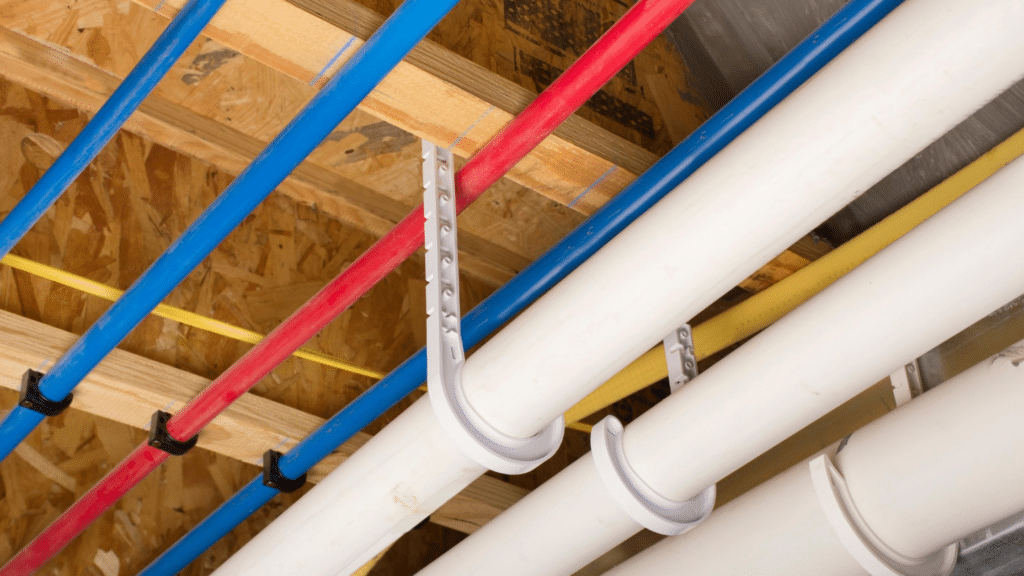
How to Install PEX Pipe
Installing PEX pipe is more straightforward than traditional plumbing materials, but it does require specialized tools. Various methods can be used to connect PEX pipes to plumbing fixtures and existing pipes, such as using stab-in tees, compression valves, and push-to-connect fittings.
Tools You’ll Need
- Crimp Rings or Cinch Clamps for watertight seals
- PEX Manifold System for home-run configurations
- Special Crimping Tool or Ratchet Clamping Tool to secure connections
Installation Options
PEX can be installed using a manifold system that routes individual pipes to each fixture (“home-run” plumbing) or a more traditional branch-and-tee model to connect PEX. Its flexibility allows it to weave around obstacles, drastically reducing installation time.
PEX Pipe Fittings and Connections
PEX pipe fittings and connections are designed to be user-friendly and provide a secure, watertight seal. There are several types of fittings and connections available, each suited for different applications.
- Crimp Rings: These are a popular choice for PEX connections. Crimp rings are easy to install and provide a reliable seal. They require a special crimping tool to secure the ring around the PEX tubing and fitting.
- Cinch Clamps: Another option for PEX connections is cinch clamps, which use a stainless steel clamp to secure the connection. These clamps are tightened using a ratchet clamping tool, ensuring a tight and secure fit.
- Push-Fit Fittings: For those looking for a quick and easy solution, push-fit fittings are an excellent choice. These fittings use a simple push-fit design to connect the PEX tubing, eliminating the need for special tools. They are ideal for DIY projects and quick repairs.
When choosing PEX fittings and connections, it’s crucial to select the correct size and type for your specific application. Following the manufacturer’s instructions for installation is essential to ensure a secure and watertight connection. Properly installed PEX fittings and connections will provide a reliable and long-lasting plumbing system for your home.
Pro Tip: Avoid direct sunlight exposure during the installation process, as UV light can degrade the material.
Troubleshooting and Repairs
One major advantage of PEX is its ease of repair. If a connection needs fixing, you’ll only need a few tools.
- To disassemble rings, use a special removal ring or side cutters.
- If troubleshooting leaks, check fittings such as brass fittings, copper crimping rings, or stainless steel clamps.
Its resistance to environmental stress crack resistance means fewer long-term issues for homeowners.

Considering PEX for Your Home? Contact MD Sewer and Plumbing Today!
PEX piping has revolutionized residential plumbing by offering flexibility, durability, and cost-effectiveness that traditional piping materials can’t match. Whether you’re upgrading an aging plumbing system or building a new home, PEX should certainly be on your radar.
Start with small steps. Plan your system, choose the right type of PEX, and consult experts if necessary. With its versatility and ease of use, PEX can transform the way water flows through your home.
